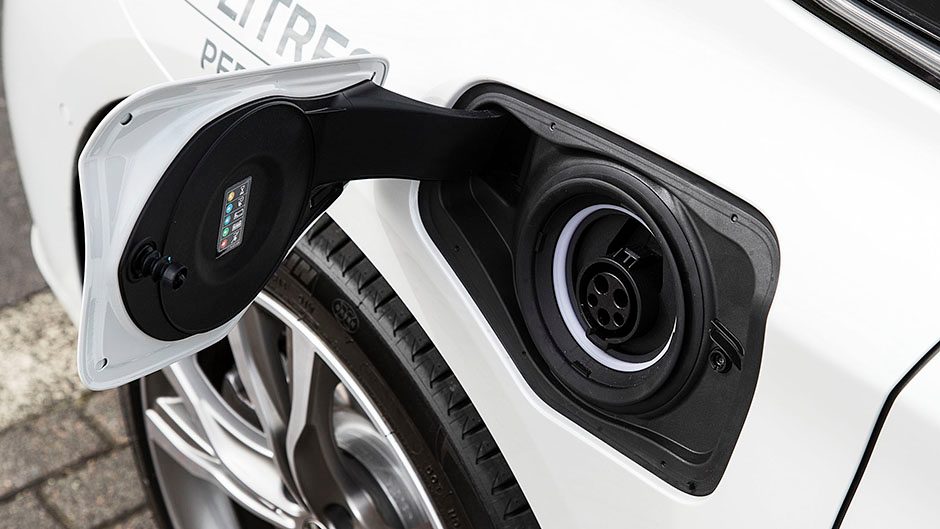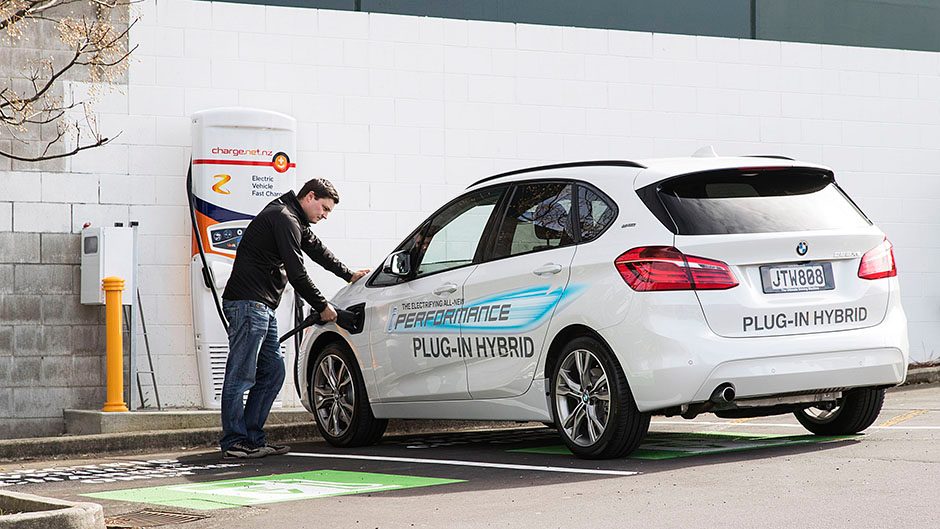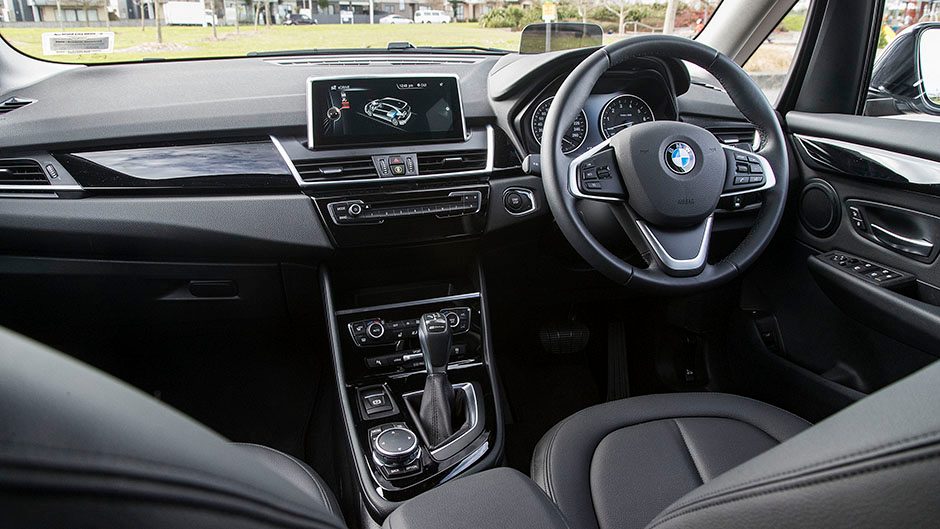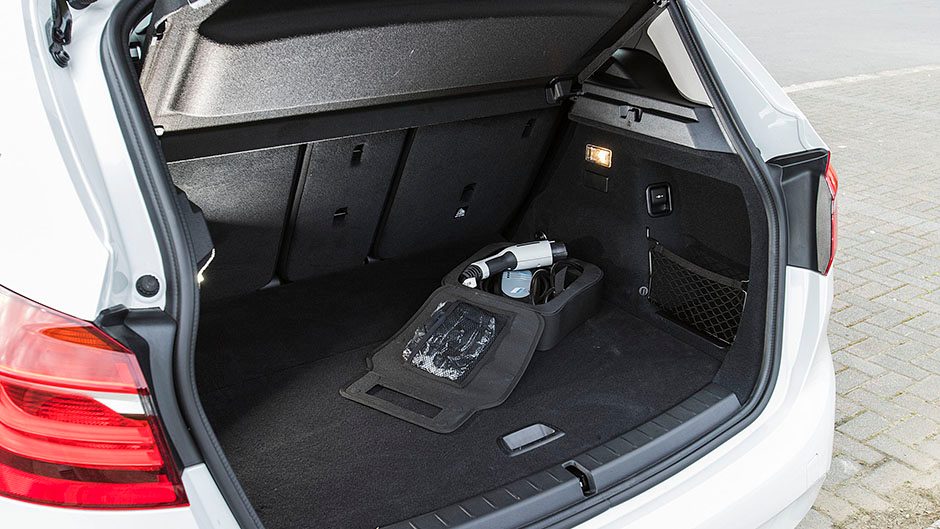BMW’s i performance range is the antidote to all the hell fire and carbon emissions of the M line-up. The tech leaders are the i3 and i8 but added to these are the new plug-in hybrids; the 330e we trialled in July and this month we’re into the cheapest of BMW’s hybrids, the 2 Series Active Tourer. It’s called the 225xe and uses a similar hybrid approach to the i8, though they’ve flipped the layout with a 1.5 turbopetrol powering the front wheels through a six-speed auto while the rears are turned by volts and amps. When the two power sources combine they deliver all-wheel drive or xDrive in BMW speak, hence the x in the name, while hopefully it’s obvious what the e is all about.

The numbers
The headline figures are the combined average fuel consumption of 2.1L/100km and 49g/km, though as we’ll get to, results will vary. Some other figures; the overall system output is rated at 165kW and 385Nm thanks to the combination of the 100kW/220Nm engine (the same used by the 218i) and a rear-mounted 65kW/165Nm electric motor powering the rear wheels through a single-speed gearbox. Depending on the amperage of your socket, recharging the 7.6kWh lithium-ion battery takes between two (16A) and four hours (10A), with a full charge said to require 5.8kWh worth of electricity. The 225xe has a full EV mode, BMW stating a maximum of 41 kilometres but again results will vary. The electric bits add weight, the 225 scaling up at 1740kg, some 285kg more than the 218i we weighed.
Modes and more modes
There are three hybrid modes, the first being Auto eDrive which uses a mix of electric and petrol motivation to best effect and will maximise EV running up to 80km/h, as long as you don’t press too hard on the go pedal. Once the battery is juiced you still receive electric assistance to help move off the mark and the system will regenerate on the go to give you bouts of EV travel on a constant throttle at around 50km/h. There’s also a Max eDrive mode for full electric drive up to 125km/h, and a save battery mode used either for charging the battery via the engine, or for saving the battery charge for EV driving later. In full hybrid mode it’s a seven-second whippet, squirting off the mark smartly thanks to four-wheel traction, and is two seconds quicker than the 218i over both the 0-100 and 80-120 trials. In Max eDrive mode, the 0-100km/h run takes a leisurely 15sec. Pushing the throttle to the first detent on the accelerator pedal delivers the full eDrive oomph, while flooring it will enliven the triple.

Your mileage may vary
We never got close to the 41km promise of ideal EV travel; cold, rainy weather is not conducive to good EV mileage, it turns out. But even after a full recharge, the suggested EV range displayed by the trip computer only read 26km, and we netted 27km before we were back burning hydrocarbons. The average for the day’s 75km of travel was 5.1. As with any hybrid, its forte is around-town driving. BMW mentions a few different consumption figures on its website. It says in auto eDrive, short trips in the city can net 1.4L/100km if you require the odd burst of go from the petrol engine, while journeys of between 50 to 60 kays are good for 4.5L/100km. On the highways, the engine is the main source of drive and BMW says the 225xe will return around 7.0L/100km with a range of 550km.
Real world running
To get anywhere near the 2.1L/100km figure you will need to plug it in whenever you get the chance, keep your trips short and make the most of the EV mode. It works best in urban running with an economical driving style; smooth and steady acceleration and plenty of coasting to maximise the regeneration process. There’s enough electric poke to flow easily with traffic and while you can happily EV on the motorway, it sucks the power and the electric range quickly diminishes. Once the battery is done, the average quickly starts to rise on the trip computer, into the sevens as the engine needs to drag around 1700kg of mass. The long term average according to the trip computer was sitting at 5.8L/100km for just over 1000km travelled. So as we’ve realised with these plug-ins before, you do have to plug them in always and often if you hope to match the alluring claim.

A decent drive though?
Well for a hybrid, yes. You notice the added weight in the rear of the 2 Series chassis, and it’s not as fluid over the bumps as the regular 218i but with all wheels in on the action there’s plenty of drive out of the bends, the ‘E’ torque giving you a good shove out of tight corners. There’s a momentary pause in the electric delivery as you get back on the throttle but the engine is always working away so it’s not like you’re waiting around for things to happen. Though weighty, the balance is sound, and the weight is low so there’s no untoward roll while understeer is hard to generate too. The brake pedal can feel a tad snatchy but the steering is sorted with a consistent weighting and it’s quick enough.
Not overtly hybrid
The 225xe looks like a regular Active Tourer though clearly the local marketing department thought it too subtle, shouting about its hybrid credentials with gaudy graphics. The cabin too is otherwise conventional, no gimmicky gear levers or complex controls, just an eDrive button and some additional infographics in the trip computer. The electric bits haven’t impacted too much on the interior of the Active Tourer. To fit everything in underneath, the fuel tank is smaller (36L) and the rear seat is mounted 30mm higher to accommodate the battery. The seat no longer slides like it does in the regular 218i and while the boot space is listed at 400L you can’t lower the floor like you can in the regular 218i and seats won’t fold all the way flat either.

Yeah but?
There’s the little issue of pricing. The 218i starts at $50,500, the 218d at $60,900 and is good for a claimed 4.1L/100km. And then there’s the $68,500 asked for the 225xe, making it just $14k cheaper than the i3 REX. The specification level is similar to the 218d though you’ll pay extra for AEB and active cruise ($2500), power tailgate and smart key ($1500) and the infotainment was upgraded in this model too which included the head-up display ($3500). Until the price premium is drastically reduced (or subsidised, how about it John?), these pricey plug-ins will remain niche. Still, it does show there’s great promise in the concept and BMW proves hybrids don’t have to be awfully dull to drive.
| Model | BMW 225xe | Price | $68,500 |
| Engine | 1499cc, IL3, T/DI, 100kW/220Nm | Drivetrain | 6-speed auto, e-AWD |
| Fuel Use | 2.1L/100km | C02 Output | 49g/km |
| 0-100km/h | 6.99sec | Weight | 1740kg |


